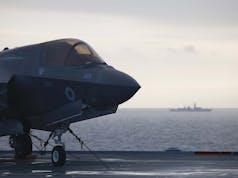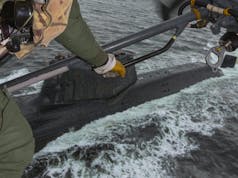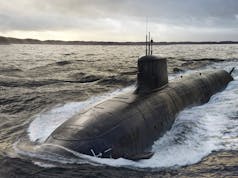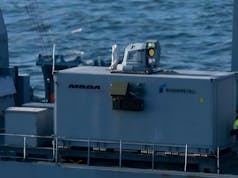A NATO maritime task group, SNMG1, is currently operating in the waters of the Arctic and High North as part of a broader effort to maintain collective security and freedom of navigation in the region, according to the Alliance.
Ships and aircraft assigned to Standing NATO Maritime Group 1 (SNMG1) are conducting presence operations, routine patrols, and anti-submarine activities. The task group is led by the Dutch frigate HNLMS De Ruyter and includes Norway’s HNoMS Thor Heyerdahl, Portugal’s NRP Bartolomeu Dias, and Germany’s FGS Rhön. Maritime patrol aircraft are also contributing to the effort.
According to the press release, the patrols aim to protect critical sea lines of communication and reflect NATO’s ongoing concern with maritime security in a region where climate change is reshaping strategic realities. As ice retreats, access to shipping lanes and natural resources is increasing, raising the stakes for regional security actors.
The commander of SNMG1, Commodore Arjen S. Warnaar of the Royal Netherlands Navy, said NATO’s presence in the Arctic underscores its core principles.
“Our operations in the Arctic and High North reflect the Alliance’s enduring commitment to peace, stability, and freedom of navigation,” he said. “Operating in this region demands resilience, adaptability, and seamless cooperation. Qualities NATO forces continue to demonstrate every day.”
The press release presents NATO’s activities as both routine and forward-looking, with an emphasis on learning to operate in a challenging and evolving maritime environment. The task group’s operations are not described as a response to any specific threat, though the broader context includes growing interest in the Arctic from other global powers.
Seven NATO members – Canada, Denmark, Finland, Iceland, Norway, Sweden, and the United States – have Arctic territory.
SNMG1 is one of NATO’s four standing maritime task groups maintained under the operational control of Allied Maritime Command. These formations provide persistent naval presence and support NATO’s broader response capabilities. While the Alliance describes these deployments as stabilising, they also reflect a shift toward a more assertive maritime posture in a region that is increasingly contested.














Before 2010 you could guarantee that either SNMG1 or 2 included a RN frigate or destroyer, often both. In the 2010’s it became one most of the time. In the early 2020’s it became one, occasionally. It’s now neither, ever. With just c.6 operational escorts and non-negotiable taskings such as TAPS, FRE and UK CSG – the tasking has had to bite the dust. As will the forward deployment of at least one frigate (and usually 4 frigates and destroyers plus a RFA tanker as recently as the 1980’s) to the Arabian Gulf when Lancaster returns to be scrapped in November, ending a tasking that has been continuously filled since probably the 1700’s.
The royal navy is too busy in the channel …. Oh no. Sorry thay are French